Ginger Cat Appreciation Day comes around every year on September 1st. Chris Roy came up with the idea to commemorate his sweet 15-pound ginger cat, Doobert, who died in 2014. Doobert and Roy became a pair in 1997 when the software engineer found a stray kitten and adopted him. The two enjoyed almost two decades together before Doobert died at 17.
Ginger Cat Appreciation Day is a time to celebrate and honor the cats in your life like the ones currently knocking vases from shelves and those now gone from our lives. It’s also a day to highlight the incredible love rescued animals often bring into our lives. There are usually few official activities planned around the day, so your imagination is the limit when it comes to how you celebrate.
Ginger Cat Traits and Characteristics
Ginger refers to the color of a cat’s coat. Various breeds and mixes, including Domestic Shorthair, British Shorthair, Maine Coon, Abyssinian, and Burmese cats, can sport ginger fur. These adorable kitties come in short and long-haired variants, and they’re also known as orange tabbies.
Most, but not all, ginger cats have an “M” on their forehead, and the vast majority are male. The orange fur gene sits on an X chromosome. Male cats only have one X chromosome; if the orange fur gene is present, you get a ginger tabby. Female cats have two X chromosomes and must have the orange fur gene on both chromosomes to express the trait.
Ginger cats’ fur ranges from light orange to rich, deep shades of russet. And they’re some of the most loving cats in the feline family, with a reputation for developing deep bonds with humans.
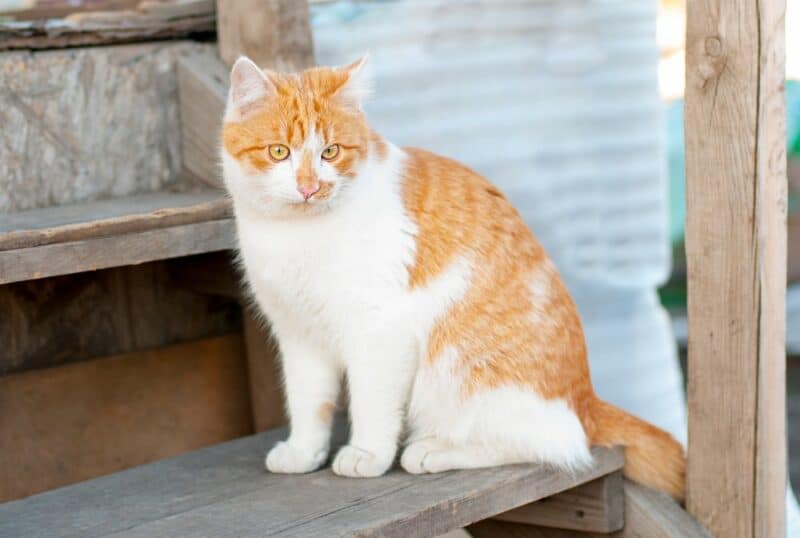
 The 5 Ways to Celebrate Ginger Cat Appreciation Day With Your Cat
The 5 Ways to Celebrate Ginger Cat Appreciation Day With Your Cat
If you have a ginger cat companion, you’re in luck. All you have to do is up your appreciation game and give your buddy a bit of extra love. Think of it as a day to do something extra special for your cat. But when meeting feline demands, some planning often goes a long way! Below, you’ll find a few fun suggestions for ways to spoil your pet on Ginger Cat Appreciation Day.
1. Treats
Cats love treats! So why not celebrate Ginger Cat Appreciation Day by giving your cat a few special treats? You can buy several healthy treats at the pet store that won’t cost a ton, but you can also make tasty homemade treats to show your cat some love. For an easy option that might not even require a trip to the store, place a small portion of chicken in the oven.
Skip the salt, onions, garlic, and other flavorings that could make your pet sick. Remove the cooked meat from the bone, and you’ll have a nice, tasty treat for your cat to nibble on.
Chances are your pet already has a favorite toy, but you can make your cat’s day extra special by sprinkling catnip on it. Alternatively, you can give it a spritz with a catnip spray. But cats also need exercise to be healthy, so you can provide your ginger buddy a brand new teaser to entice your pet to get moving during playtime. Or you can go the high-tech route and purchase a fun electronic option that gives your pet something to chase.
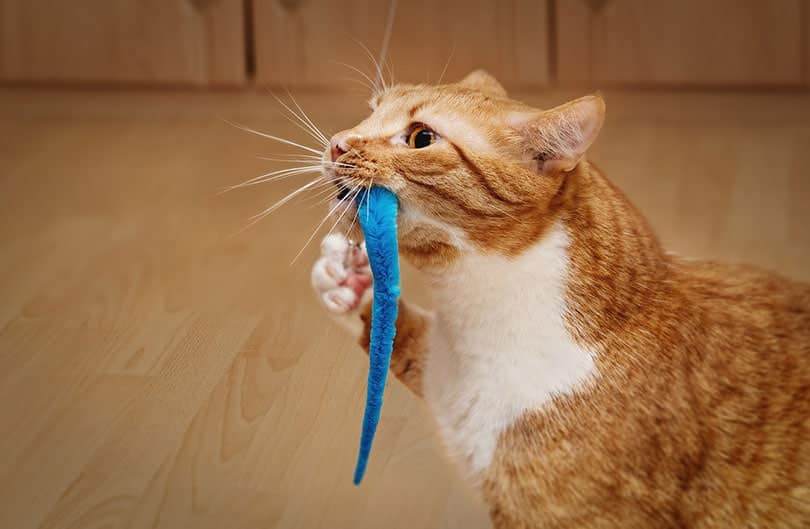
3. Beds
Some cats can zonk out for up to 15–20 hours a day. Senior cats and kittens often require more sleep than healthy middle-aged pets. Consider treating your senior cat to a self-warming bed to keep them nice and snug. Models with low sides are great for cats with limited mobility. Look for a covered bed if your cat prefers privacy when napping.
4. Food Puzzles and Interactive Toys
Food puzzles bring out the hunter in your cat by making your pet use its senses and paws to find and liberate treats. Felines that have feline-appropriate ways of engaging with their environment, like food puzzles, often suffer less from separation anxiety. And interactive toys allow cats to entertain themselves for hours, batting at disappearing balls and attempting to liberate fake mice.
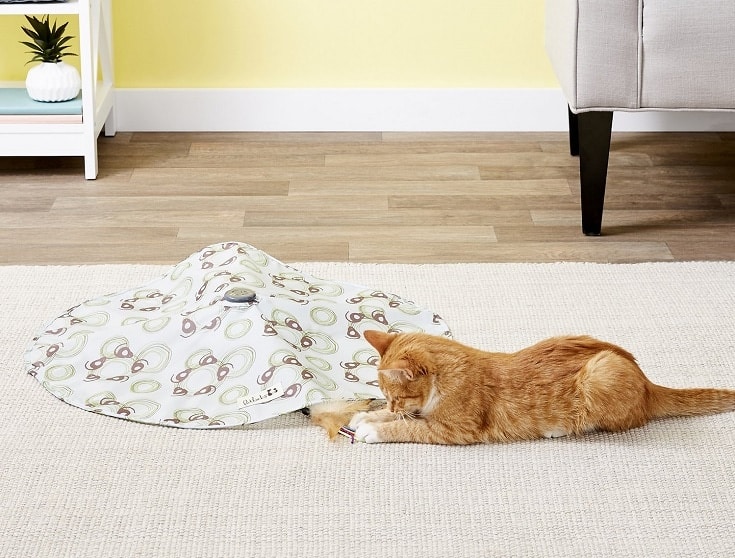
5. Cat Trees, Towers, and Shelves
Cats are predators and naturally feel most comfortable and relaxed when perched up high. It provides a sense of safety and allows your cat to monitor what you’re doing. Cat trees and towers allow cats to scratch, climb, nap, and perch.
Many feature several levels and different types of hideaways, planks, and beds to give pets multiple napping options. Wall-mounted cat shelves fulfill much the same purpose, and they’re a great way to provide fun for your cat if you’ve only got limited space.
 Other Ways to Celebrate Ginger Cat Appreciation Day
Other Ways to Celebrate Ginger Cat Appreciation Day
Chris Roy came up with the idea of Ginger Cat Appreciation Day to honor his cat, Doobert. While he was alive, Doobert inspired Roy to do some serious work on behalf of stray pets, including transporting animals to locations where they were more likely to be adopted.
After his cat’s death, Roy, a technology wiz, designed an app to facilitate animal rescue work. He named the app Doobert in honor of his beloved feline companion. So why not celebrate Ginger Cat Appreciation Day by doing something for rescue cats?
1. Get Involved With a Rescue Organization
Consider reaching out to a local rescue organization to see how you can help. There are often opportunities to transport pets and even participate in policy development. Organizations often need help with administrative tasks, and if you’re passionate about animal rescue, there are opportunities to train for volunteer emergency response teams. Most organizations have flexible at-home volunteer opportunities that only require participants to commit to a few hours a week.
2. Consider Fostering a Cat
Shelters often need temporary homes for kittens and adult cats. Fostering plays a critical role in saving animals that require a bit of extra TLC and attention. Foster parents are needed to care for and socialize kittens too young for adoption. These volunteers also provide quiet homes for cats who need extra time and space to recover and recuperate without the non-stop stimulation of a shelter. Shelters sometimes also ask volunteers to take in cats when the facility runs out of room for new animals.
The process usually involves an application, interview, and training. But fostering is generally quite flexible, with most organizations happy to accommodate volunteer requests regarding assignment lengths and care requirements. The organization almost always takes care of medical care, food, supplies, and support. Fostering also benefits humans; you’ll get all the joys of loving animal companionship without the long-term commitment.
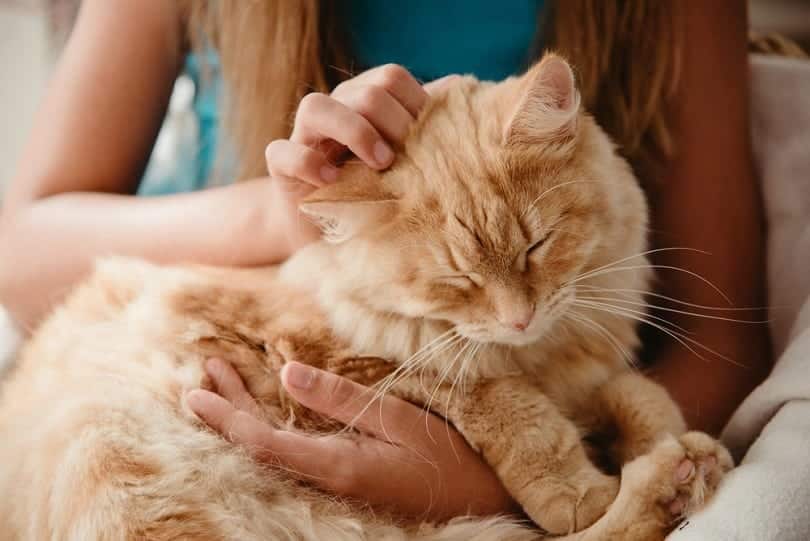
Conclusion
Ginger Cat Appreciation Day is celebrated on September 1st. The day is all about giving cats love! There are only a few official activities planned around the event, which provides you with a chance to be creative. Treat your pet to a few extra special goodies, or you can plant a catnip container garden for your pet. Alternatively, consider fostering or donating to an animal rescue organization whose practices align with your values. But the most important thing you can do on Ginger Cat Appreciation Day is to take a moment to fully appreciate cats and how much pure joy they bring into the world.
Featured Image Credit: Africa Studio, Shutterstock

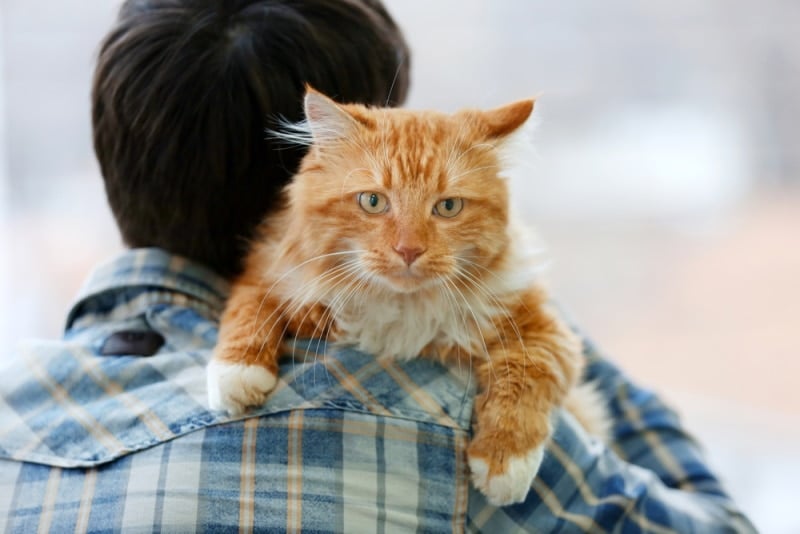

 The 5 Ways to Celebrate Ginger Cat Appreciation Day With Your Cat
The 5 Ways to Celebrate Ginger Cat Appreciation Day With Your Cat






